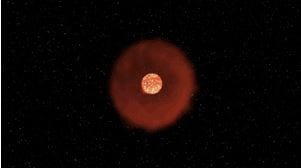Supernova May Have ‘Burped’ Before Exploding

The slow fade of radioactive elements following a supernova allows astrophysicists to study them at length. But the universe is packed full of flash-in-the pan transient events lasting only a brief time, so quick and hard to study they remain a mystery.
Only by increasing the rate at which telescopes monitor the sky has it been possible to catch more Fast-Evolving Luminous Transients (FELTs) and begin to understand them.
According to a new study in Nature Astronomy, researchers say NASA’s Kepler Space Telescope captured one of the fastest FELTs to date. Peter Garnavich, professor and department chair of astrophysics and cosmology physics at the University of Notre Dame and co-author of the study, described the event as “the most beautiful light curve we will ever get for a fast transient.”
Read more here.
March 28, 2018
More Like This
Related PostsLet your curiosity roam! If you enjoyed the insights here, we think you might enjoy discovering the following publications.






